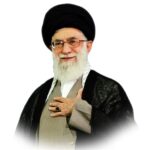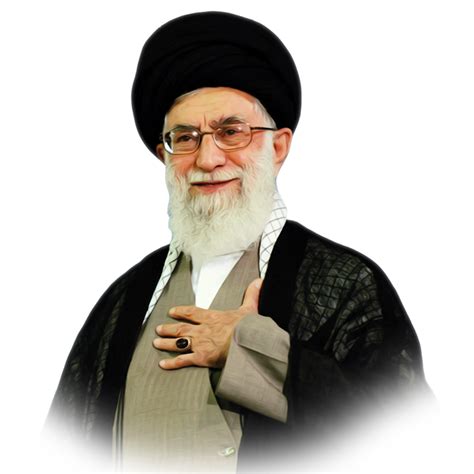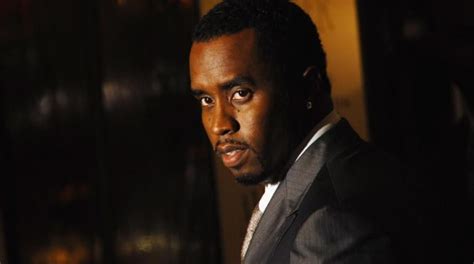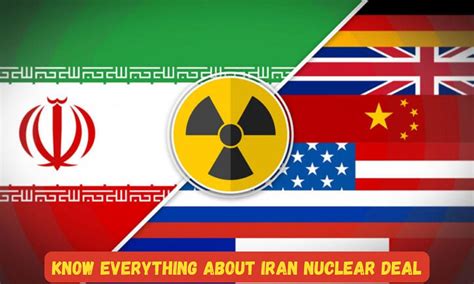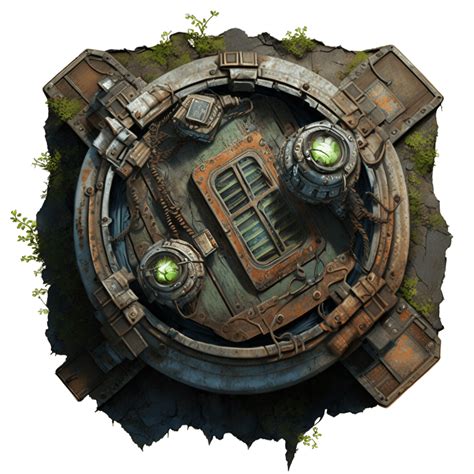
Amid escalating regional tensions and internal unrest, Iran’s Supreme Leader Ayatollah Ali Khamenei has reportedly retreated to a secure bunker, raising concerns about the stability of the Islamic Republic and prompting speculation about potential succession struggles and the possibility of a “poison cup” scenario, where Khamenei might be forced to make concessions to preserve the regime.
Ayatollah Ali Khamenei, Iran’s Supreme Leader, has reportedly taken refuge in a fortified bunker as internal and external pressures mount, fueling speculation about the regime’s stability and the potential for significant political shifts. The move, described in some circles as a precautionary measure against escalating threats, highlights the precarious position of the Islamic Republic amid growing domestic discontent and heightened regional tensions. The situation raises the specter of a “poison cup” scenario, a term referring to the possibility that Khamenei may be compelled to make drastic concessions to quell unrest and maintain the regime’s hold on power.
According to reports, the decision to relocate Khamenei to a secure location underscores the severity of the challenges facing the Iranian leadership. These challenges include widespread public discontent over economic hardship, simmering anger fueled by social restrictions, and increasing geopolitical pressures emanating from both regional rivals and international actors. The confluence of these factors has created an environment of heightened instability, prompting concerns about the regime’s long-term viability.
The retreat to a bunker, reminiscent of strategies employed during the Iran-Iraq War, is viewed by analysts as a sign of the leadership’s apprehension. “The move to a bunker signifies a heightened sense of vulnerability within the Iranian leadership,” explains a Middle East analyst. “It suggests they are bracing for a potential escalation of internal or external threats, or perhaps both.” This perception of vulnerability is further exacerbated by persistent rumors about Khamenei’s declining health, which has intensified the focus on the succession process.
The succession of the Supreme Leader is a particularly sensitive issue in Iran’s political landscape. While Khamenei’s son, Mojtaba, is widely seen as a potential successor, his ascension is not guaranteed, and faces considerable opposition from various factions within the regime. The lack of a clear and universally accepted successor has created a power vacuum, exacerbating existing tensions and contributing to the overall sense of uncertainty.
The “poison cup” analogy refers to the possibility that Khamenei, in order to preserve the Islamic Republic, may be forced to make concessions that are deeply unpalatable to hardliners within the regime. This could include agreeing to nuclear negotiations with the West, implementing economic reforms that challenge the entrenched interests of the Revolutionary Guard, or even easing some of the social restrictions that have fueled public discontent. Each of these concessions would carry significant risks, potentially alienating key constituencies and further destabilizing the regime.
The current situation is further complicated by Iran’s deteriorating economic conditions. Years of sanctions, coupled with internal mismanagement, have crippled the country’s economy, leading to soaring inflation, high unemployment, and widespread poverty. These economic woes have fueled public anger and contributed to the growing sense of discontent. The government’s inability to address these economic problems has further eroded its legitimacy and increased the likelihood of further unrest.
Adding to the internal pressures are the external challenges facing Iran. The country remains locked in a tense standoff with the United States over its nuclear program, and its relationship with regional rivals such as Saudi Arabia and Israel remains fraught with hostility. These external pressures have further isolated Iran and contributed to its economic difficulties. The possibility of military conflict, either directly or through proxy forces, remains a constant threat, further exacerbating the sense of instability.
The decision to move Khamenei to a bunker reflects a calculated effort to ensure his safety and maintain his ability to govern in the event of a crisis. However, it also sends a powerful signal about the regime’s perception of its own vulnerability. The move is likely to embolden both internal opposition groups and external adversaries, further increasing the pressure on the Iranian leadership.
The coming months will be crucial in determining the future of the Islamic Republic. Whether Khamenei can successfully navigate the challenges he faces, or whether he will be forced to drink from the “poison cup,” remains to be seen. The outcome will have profound implications not only for Iran but also for the wider region and the international community.
Internal Unrest and Social Discontent
Iran has been grappling with significant internal unrest stemming from a variety of grievances. High unemployment rates, particularly among the youth, coupled with soaring inflation and economic mismanagement, have created a fertile ground for discontent. The rising cost of living has made it increasingly difficult for ordinary Iranians to meet their basic needs, leading to widespread frustration and anger.
In addition to economic grievances, social restrictions imposed by the regime have also fueled public discontent. Strict dress codes for women, limitations on freedom of expression, and restrictions on internet access have all contributed to a sense of oppression and resentment. These social restrictions, coupled with the lack of political freedom, have led to a growing demand for change.
The protests that erupted in late 2022 following the death of Mahsa Amini, a young woman who died in police custody for allegedly violating the dress code, served as a stark reminder of the depth of public anger. The protests, which quickly spread across the country, were met with a brutal crackdown by the regime, resulting in numerous deaths and arrests. However, the protests also demonstrated the resilience of the opposition and the determination of many Iranians to challenge the authority of the regime.
The government’s response to the protests has further alienated the public and eroded its legitimacy. The use of excessive force against peaceful protesters has drawn condemnation from international human rights organizations and further fueled the sense of injustice. The regime’s attempts to suppress dissent through censorship and intimidation have also been largely ineffective, as Iranians continue to find ways to express their grievances and organize opposition movements.
The ongoing internal unrest poses a significant challenge to the stability of the Islamic Republic. While the regime has demonstrated its willingness to use force to suppress dissent, it is unlikely that it can completely quell the public’s desire for change. The underlying grievances that have fueled the unrest remain unaddressed, and the potential for further protests and instability remains high.
Regional Tensions and Geopolitical Pressures
Iran’s relationship with its regional neighbors is marked by deep-seated tensions and rivalries. The country’s support for proxy groups in countries such as Lebanon, Syria, and Yemen has fueled conflicts and instability throughout the region. Iran’s pursuit of nuclear weapons has also raised concerns among its neighbors, particularly Saudi Arabia and Israel, who view it as an existential threat.
The rivalry between Iran and Saudi Arabia is particularly intense. The two countries have long competed for influence in the region, and their proxy wars in countries such as Yemen have exacerbated tensions. The Saudi-led coalition’s intervention in Yemen, aimed at countering Iranian-backed Houthi rebels, has resulted in a devastating humanitarian crisis and further destabilized the region.
Iran’s relationship with Israel is also fraught with hostility. Israel views Iran’s nuclear program as a direct threat and has repeatedly threatened to take military action to prevent Iran from acquiring nuclear weapons. Iran, in turn, has vowed to retaliate against any Israeli attack, raising the specter of a wider conflict.
The United States has also played a significant role in shaping the regional dynamics. The Trump administration’s decision to withdraw from the Iran nuclear deal and reimpose sanctions on Iran has further isolated the country and increased tensions. The Biden administration has sought to revive the nuclear deal, but negotiations have stalled, and the future of the agreement remains uncertain.
The regional tensions and geopolitical pressures facing Iran have significant implications for the country’s stability. The threat of military conflict, either directly or through proxy forces, remains a constant concern. The economic sanctions imposed by the United States have also had a devastating impact on the Iranian economy, further fueling public discontent.
The Succession Question and Potential Power Struggles
The question of who will succeed Ayatollah Ali Khamenei as Supreme Leader is a highly sensitive and consequential issue in Iranian politics. Khamenei, who has held the position since 1989, is 85 years old, and there have been persistent rumors about his declining health. The lack of a clear and universally accepted successor has created a power vacuum and exacerbated existing tensions within the regime.
One of the leading candidates to succeed Khamenei is his son, Mojtaba. Mojtaba is a cleric with close ties to the Revolutionary Guard and is believed to have the support of some powerful figures within the regime. However, his candidacy also faces significant opposition from those who believe that hereditary succession is incompatible with the principles of the Islamic Republic.
Another potential candidate is President Ebrahim Raisi. Raisi, a hardline cleric, is seen as a close ally of Khamenei and has strong support within the conservative establishment. However, his popularity among the general public is limited, and his candidacy could face resistance from those who seek a more moderate leader.
The succession process is likely to be complex and contentious. Different factions within the regime will vie for influence, and the outcome could have a significant impact on the future direction of the Islamic Republic. The possibility of a power struggle cannot be ruled out, particularly if Khamenei’s health deteriorates rapidly or if there is no clear consensus on a successor.
The “Poison Cup” Scenario: Concessions and Compromises
The term “poison cup” refers to the possibility that Ayatollah Ali Khamenei, in order to preserve the Islamic Republic, may be forced to make concessions that are deeply unpalatable to hardliners within the regime. This could include agreeing to nuclear negotiations with the West, implementing economic reforms that challenge the entrenched interests of the Revolutionary Guard, or even easing some of the social restrictions that have fueled public discontent.
The decision to engage in nuclear negotiations with the West would be a particularly difficult one for Khamenei. Hardliners within the regime have long opposed any compromise with the United States and its allies, viewing it as a betrayal of the principles of the Islamic Revolution. However, the economic sanctions imposed by the United States have had a devastating impact on the Iranian economy, and the prospect of sanctions relief could be a powerful incentive for Khamenei to reconsider his position.
Implementing economic reforms that challenge the entrenched interests of the Revolutionary Guard would also be a risky move. The Revolutionary Guard controls vast swathes of the Iranian economy and has a vested interest in maintaining the status quo. Any attempt to curtail its economic power would likely face fierce resistance.
Easing some of the social restrictions that have fueled public discontent could also be a controversial decision. Hardliners within the regime believe that strict social controls are essential for maintaining order and preventing the spread of Western values. However, the ongoing protests and the growing demand for greater freedom have made it increasingly difficult for the regime to maintain its grip on power.
The decision to drink from the “poison cup” would be a difficult and consequential one for Khamenei. It would likely alienate key constituencies within the regime and could potentially destabilize the Islamic Republic. However, it could also be the only way to preserve the regime in the face of mounting internal and external pressures.
Impact on the Region and the International Community
The situation in Iran has significant implications for the region and the international community. A stable and prosperous Iran could play a positive role in promoting regional stability and economic development. However, a destabilized or collapsing Iran could have catastrophic consequences, potentially leading to a civil war, a refugee crisis, and the proliferation of weapons of mass destruction.
The international community has a responsibility to engage with Iran constructively and to encourage the regime to address the underlying causes of its internal and external challenges. This includes supporting efforts to revive the Iran nuclear deal, promoting economic reforms, and encouraging respect for human rights.
The United States, in particular, has a crucial role to play. The Biden administration’s decision to seek a diplomatic solution to the Iran nuclear issue is a welcome step. However, the United States must also be prepared to address the broader range of issues that are contributing to instability in the region. This includes working with its allies to counter Iranian aggression, promoting human rights, and supporting economic development.
The future of Iran is uncertain. However, the choices that the Iranian leadership makes in the coming months will have a profound impact on the country and the world. The international community must be prepared to respond to whatever outcome emerges, whether it is a peaceful transition to democracy or a descent into chaos and conflict.
Frequently Asked Questions (FAQs)
1. Why is Ayatollah Ali Khamenei reportedly in a bunker?
Reportedly, Ayatollah Ali Khamenei has moved to a secure bunker due to escalating internal unrest, economic pressures, regional tensions, and potential threats to his safety. This move signifies a heightened sense of vulnerability within the Iranian leadership, suggesting they are preparing for potential escalations of internal or external threats.
2. What is the “poison cup” scenario in the context of Iranian politics?
The “poison cup” scenario refers to a situation where Ayatollah Ali Khamenei might be forced to make significant concessions—unpalatable to hardliners within the regime—to preserve the Islamic Republic. These concessions could include nuclear negotiations with the West, economic reforms challenging the Revolutionary Guard’s interests, or easing social restrictions.
3. Who are the potential successors to Ayatollah Ali Khamenei?
Two leading candidates for the Supreme Leader position are Mojtaba Khamenei (Khamenei’s son) and President Ebrahim Raisi. Mojtaba has close ties to the Revolutionary Guard, while Raisi is a hardline cleric with backing from the conservative establishment. However, each faces opposition and potential challenges to their succession.
4. How is the internal unrest in Iran affecting the stability of the regime?
Internal unrest is fueled by economic grievances (high unemployment, inflation), social restrictions (dress codes, freedom of expression), and political oppression. Protests, like those following Mahsa Amini’s death, highlight public discontent and the regime’s legitimacy challenges. The government’s response, including suppression and censorship, has further alienated the public.
5. What is the international community’s role in the current situation in Iran?
The international community is encouraged to engage with Iran constructively by supporting efforts to revive the Iran nuclear deal, promoting economic reforms, and advocating for human rights. The U.S. has a crucial role in seeking diplomatic solutions and addressing regional instability factors, working with allies to counter aggression, promote human rights, and support economic development.



